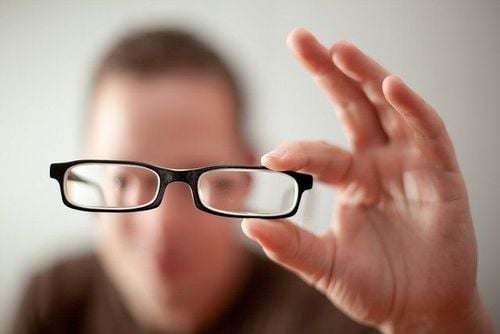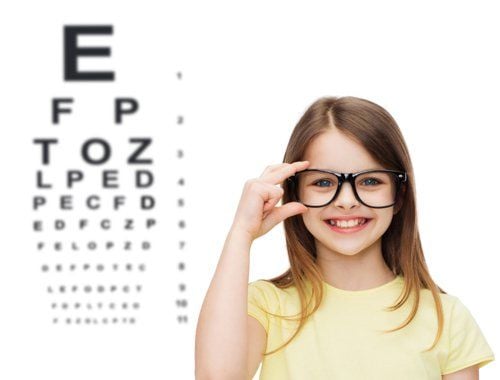This is an automatically translated article.
The article was professionally consulted by Specialist Doctor II Nguyen Thai Hung - Department of Medical Examination & Internal Medicine - Vinmec Danang International Hospital.Strabismus is a condition in which both eyes do not see the same point. There are about 2 to 3 million people in Vietnam with crossed eyes. The disease, if not detected and treated early, will affect the patient's vision. In addition, having crossed eyes also affects aesthetic problems.
1. What is cross-eyed?
Strabismus (also known as crossed eyes) is an eye disease in which the eyes cannot look straight, but look in two different directions. One eye looks straight ahead, while the other eye does not look straight, but looks in one of the directions: Looking inward, outward, looking up, down. Based on the slanted eye, it has different names such as the strabismus: the slanted eye to look out. The straight eye and the slanted eye can be interchanged or alternate. According to a study, there are about 2 to 3 million Vietnamese people with crossed eyes.2. Mechanism of cross-eyed
Each eye has 6 extraneous oculomotor muscles to regulate the activity of the eyeball, including 4 rectus muscles (upper rectus, inferior rectus, medial rectus, and lateral rectus) and 2 oblique muscles (small oblique, oblique muscle). big). The muscles that help the eye move right, left, up and down, and rotate the eyeball.In order for the two eyes to be able to look at the same point, all the muscles in each eye must work simultaneously and in harmony with each other.
In normal eyes, both eyes look at the same point, the image obtained at the rod cells is transmitted through the optic nerve to the optic nerve center in the brain. Here, the images from the two eyes are combined into a single hologram - this is called fine vision. When the two eyes do not look at the same point, the two eyes are transferred to the brain. In children, the brain rejects the image of the misaligned eye or the blurred image, so that the child will see the image of the eye that is looking straight ahead or the eye with a clearer image. In adults, the brain cannot remove images of the misaligned eye, so the patient will see double.

3. Causes of crossed eyes
Due to damage to the optic nerve, the optic nerve center or damage to the oculomotor muscle that causes strabismus.Amblyopia: cataracts,... Refractive errors: severe myopia, untreated farsightedness. Ocular muscle paralysis Inherited Brain damage, damage to oculomotor nerves: Tumor Anatomical abnormalities: Due to muscle weakness or abnormal attachment compared to anatomical position, orbital deformity. Complications of other diseases: Diabetes, traumatic brain injury, ...
4. Risk factors
Genetic factors: In the family, there is a similar disease. Refractive errors: Untreated farsightedness, the risk of strabismus will be higher than that of the treated person. Background diseases: Down, cerebral palsy, ever had a stroke, traumatic brain injury, diabetes,... the risk of strabismus is higher than that of the general population.
5. Signs/symptoms of disease
Signs of the disease that you can recognize such as: squinting when looking at or objects in front but still having to squint.Ways to check:
You stand opposite and look directly into the eyes of the person to be examined. If you see that your eyes are asymmetrical, it is very likely that the person being examined is strabismus. You give your child a toy that he likes, look closely when he looks at that toy, does his eyes drift to one side? If so, the child may have a strabismus. Strabismus that occurs suddenly, patients often have symptoms of diplopia (double vision). To relieve this symptom, the patient has to tilt the head to one side. The symptoms of diplopia decreased, but the patient always tended to tilt the head.
With cases of strabismus or strabismus, it is impossible to detect by sight. When patients have risk factors, it is necessary to periodically check at reputable ophthalmology facilities for early examination and treatment.
Strabismus is a disease that is easy to detect, and should be detected at the earliest age of children. In children under 3 years of age, when the disease is detected early, the success rate is up to 92% after treatment. In adults, strabismus is often a symptom of disease or a complication of an underlying medical condition. Recognizing the signs of strabismus, from which it is possible to detect underlying diseases or diseases that cause strabismus. If you or those around you have risk factors or signs of crossed eyes, you should go to medical facilities with eye specialists for examination and treatment.
Vinmec International General Hospital is one of the hospitals that not only ensures professional quality with a team of leading medical doctors, modern equipment and technology, but also stands out for its examination and consultation services. comprehensive and professional medical consultation and treatment; civilized, polite, safe and sterile medical examination and treatment space.
Specialist II Nguyen Thai Hung has 13 years of experience as an eye doctor at C Hospital Da Nang and Ngu Hanh Son General Hospital - Da Nang. Currently working as an Ophthalmologist at the Inter-specialty Clinic of Medical Examination - Internal Medicine, Vinmec International General Hospital Da Nang.
Please dial HOTLINE for more information or register for an appointment HERE. Download MyVinmec app to make appointments faster and to manage your bookings easily.














